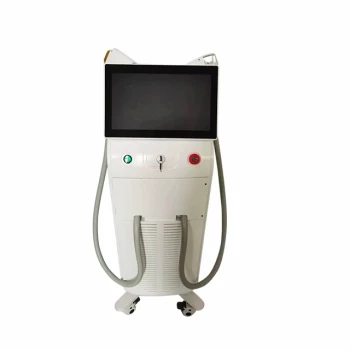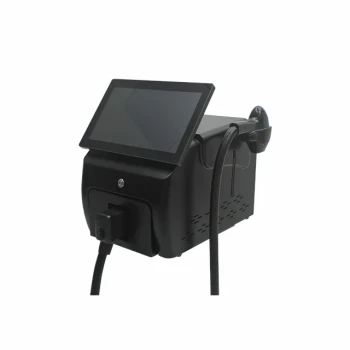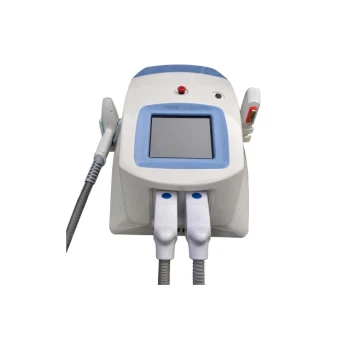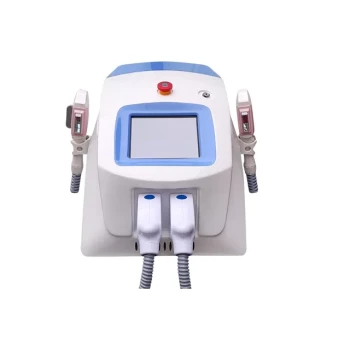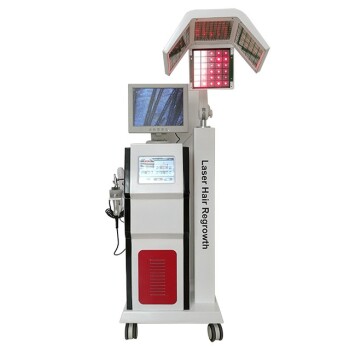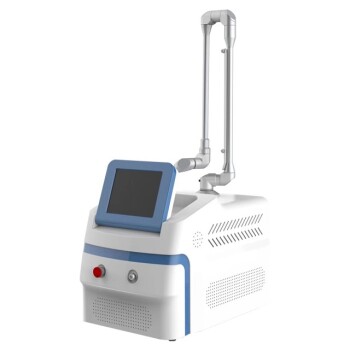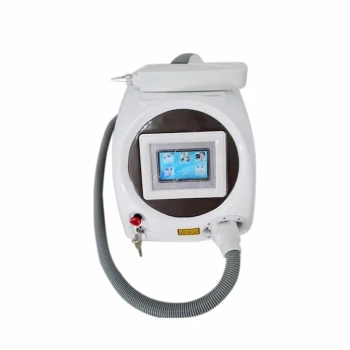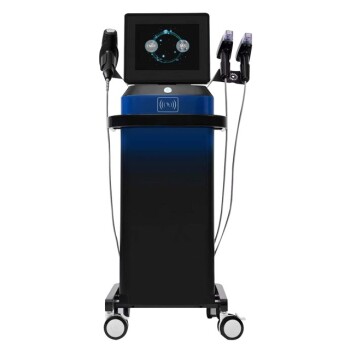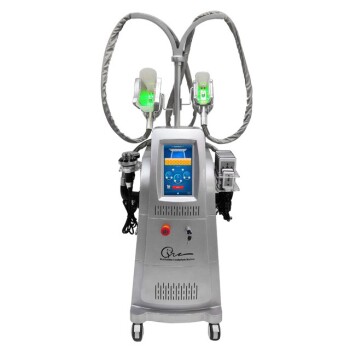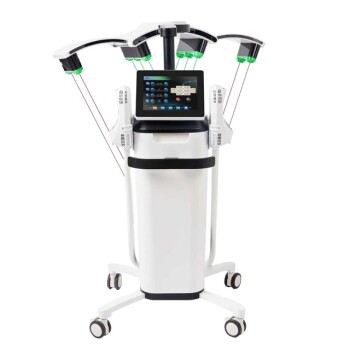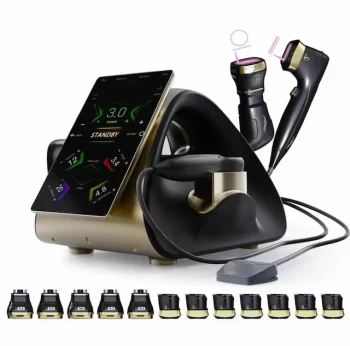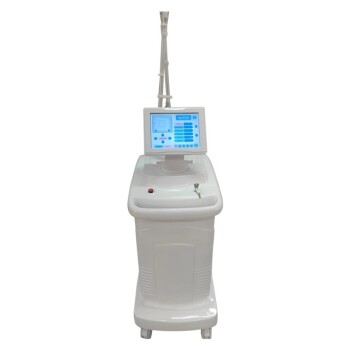In the context of light-based hair removal, diode lasers are definitively safer than IPL, especially for individuals with darker skin tones. The primary reason for this is precision: a diode laser uses a single, focused wavelength of light that specifically targets melanin in the hair follicle, minimizing collateral damage to the surrounding skin. IPL, by contrast, uses a broad spectrum of scattered light, which is less precise and carries a higher risk of affecting the pigment in the skin itself.
The fundamental difference in safety comes down to targeted energy versus scattered energy. A diode laser acts like a sniper, delivering a precise wavelength to the hair follicle. IPL acts like a floodlight, covering a wider area with a broad spectrum of light, increasing the risk of unintended interaction with the skin, particularly in those with more melanin.

The Core Difference: Wavelength and Specificity
To understand the safety profile of each technology, you must first understand how they work. The key is the type of light they use and how it interacts with its target: melanin, the pigment that gives hair and skin its color.
How Diode Lasers Work
A diode laser emits a single, coherent wavelength of light (typically 808nm or 810nm). This specific wavelength is chosen because it is highly absorbed by the melanin concentrated in the hair follicle.
By being so specific, the laser's energy bypasses the melanin in the epidermis (the top layer of skin) and travels directly to its intended target. This precision heats and destroys the follicle, preventing future hair growth.
How IPL (Intense Pulsed Light) Works
IPL is not a laser. Instead, it uses a high-powered xenon flash lamp to produce a broad spectrum of non-coherent light, covering multiple wavelengths (e.g., 500nm-1200nm). Filters are used to narrow this range, but it remains a scattered, multi-wavelength beam.
This broad spectrum of light cannot be as finely focused. As a result, the energy is absorbed by various structures in the skin, not just the melanin in the hair.
Why This Matters for Safety
The distinction between a single, targeted wavelength and a broad, scattered spectrum has direct and significant consequences for safety during hair removal treatments.
The Critical Risk for Darker Skin Tones
The primary safety challenge in light-based hair removal is distinguishing between the melanin in the hair and the melanin in the skin.
With IPL, the broad-spectrum light is absorbed by any melanin it encounters. In a person with a darker skin tone (Fitzpatrick types IV-VI), the skin contains a high concentration of melanin. IPL can't easily differentiate, leading to a much higher risk of the skin absorbing too much energy, which can cause burns, blistering, and changes in pigmentation (hyperpigmentation or hypopigmentation).
With a diode laser, the specific wavelength is significantly more attracted to the dense melanin in the hair shaft and follicle than the more dispersed melanin in the epidermis. This makes it the far safer and more effective technology for treating darker skin.
The Impact of Focused Energy
The focused nature of a diode laser ensures that the energy is delivered efficiently to the root of the hair follicle. This means treatments are often more effective, requiring fewer sessions.
Because IPL energy is scattered, less of it reaches the target follicle at the optimal depth. To compensate, the overall energy level might be increased, which further elevates the risk of adverse effects on the skin's surface.
Understanding the Trade-offs and Nuances
While diode lasers hold a clear safety advantage, it's important to consider the complete picture and avoid common misconceptions.
The Critical Importance of the Operator
The single most important factor in the safety of any light-based treatment is the skill and experience of the person operating the device. A highly trained professional using an IPL is safer than a poorly trained operator with a diode laser. Always prioritize the provider's qualifications over the specific technology.
Efficacy on Different Hair and Skin Types
For individuals with very fair skin and dark hair, the safety margin for IPL is much wider, and it can be an effective treatment. However, diode lasers are still generally considered more efficient even for this group.
Neither technology is effective on very light hair (blonde, red, or grey) because these hairs lack the melanin needed to absorb the light energy.
At-Home Devices vs. Professional Treatments
At-home IPL devices are widely available and operate on the same principles but at significantly lower energy levels to reduce the risk of user error. While this makes them "safer" from a regulatory standpoint, it also makes them far less powerful and effective than professional-grade diode lasers. Their safety is not comparable to a professional treatment administered by a trained technician.
Making the Right Choice for Your Safety
Your decision should be based on an informed understanding of your skin type and the technology best suited for it.
- If you have a darker skin tone (Fitzpatrick type IV-VI): The diode laser is the significantly safer and more effective choice. You should actively avoid IPL treatments for hair removal.
- If you have fair skin and dark hair (Fitzpatrick type I-III): Both technologies can be safe when administered by a professional, but the diode laser's precision generally offers a higher degree of safety and efficiency.
- If your primary concern is the absolute highest level of safety: Always choose a reputable clinic with certified, experienced technicians. During a consultation, they can properly assess your skin and hair type to confirm the best technology for you.
Ultimately, true safety lies in combining the right technology for your specific skin type with the expertise of a qualified professional.
Summary Table:
| Feature | Diode Laser | IPL |
|---|---|---|
| Technology | Single, focused wavelength (e.g., 808nm) | Broad spectrum of scattered light |
| Precision | High (targets hair follicle melanin) | Lower (energy scatters, affecting skin) |
| Safest For | All skin types, especially darker skin (Fitzpatrick IV-VI) | Fair skin with dark hair (Fitzpatrick I-III) |
| Primary Risk | Low risk of burns or pigmentation changes | Higher risk of burns on darker skin tones |
Prioritize Safety and Efficacy with BELIS
Choosing the right professional equipment is the first step to ensuring client safety and achieving outstanding results. BELIS specializes in advanced, medical-grade diode laser systems designed for maximum safety across all skin types.
Partner with BELIS to empower your clinic with:
- Superior Safety: Our diode lasers offer precise targeting to minimize risks and protect your clients' skin.
- Proven Efficacy: Deliver efficient, long-lasting hair removal that builds client trust and loyalty.
- Professional Reliability: Built to the highest medical standards for busy clinics and premium salons.
Ready to invest in the safer, more effective choice for your business? Let our experts help you select the perfect device for your needs.
Contact BELIS today for a professional consultation
Visual Guide

Related Products
- Clinic Diode Laser Hair Removal Machine with SHR and Trilaser Technology
- Diode Tri Laser Hair Removal Machine for Clinic Use
- Trilaser Diode Hair Removal Machine for Beauty Clinic Use
- Diode Laser SHR Trilaser Hair Removal Machine for Clinic Use
- Clinic Use IPL and SHR Hair Removal Machine with Nd Yag Laser Tattoo Removal
People Also Ask
- Which is more effective, diode or IPL? The Definitive Answer for Permanent Hair Reduction
- Can you use laser hair removal on intimate areas? Achieve Lasting Smoothness and Comfort
- How does diode laser hair removal work? The Science of Targeting Hair Follicles
- Is diode laser better than IPL? Unlock Superior Hair Removal Results
- How long does diode hair removal last? Achieve Long-Term Smoothness

